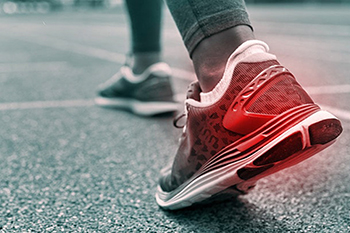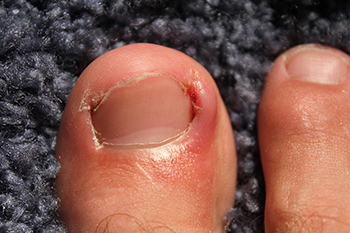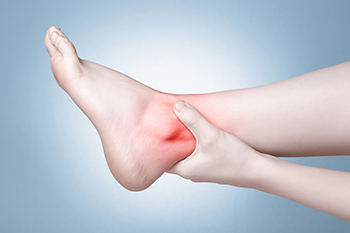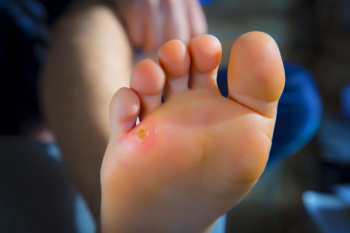Connect With Us
Blog
Items filtered by date: August 2024
Key Factors to Consider in Running Shoes

Choosing the right running shoe involves several important factors to ensure comfort and improve performance. Cushioning is vital, as it provides shock absorption and reduces impact on joints. Heel drop, the difference in height between the heel and toe, affects running gait and comfort. A lower drop encourages a more natural stride, while higher drops offer extra cushioning. Arch support is essential for stability and preventing injuries, especially for those with specific arch shapes. Pronation, or the natural inward roll of the foot, determines the level of support needed. Comfort is paramount, and the shoe should fit well in both length and width to avoid blisters and discomfort. Fit and style, including whether the shoe is narrow or wide, also affects overall comfort. If you have suffered a foot injury from wearing the wrong type of running shoes, it is suggested that you confer with a podiatrist who can treat various foot conditions, as well as guide you on what to look for in running shoes.
You should always make sure your running shoes fit properly in order to avoid injury. For more information, contact Dr. Rouder from S.I. Podiatry. Our doctor can provide the care you need to keep you pain-free and on your feet.
Choosing the Right Running Shoe for Your Foot Type
Improper shoe sizing can cause a myriad of problems for your feet. Shoes that don’t fit you properly can lead to muscular imbalances in your body, which can result in foot, knee, and hip injuries.
Tips for Finding the Right Running Shoe
- Make sure you have a thumb’s width of wiggle room between the end of your longest toe and the front of the shoe.
- There should be little to no slipping at the heel
- Don’t assume your size in one shoe brand will be your size in another
- Do not lace up your shoes too tightly
- Walk around in the store with your new shoes before you buy them
If you have any questions please feel free to contact our our office located in Staten Island, NY . We offer the newest diagnostic and treatment technologies for all your foot and ankle needs.
Toenail Problems

Toenail problems can cause significant discomfort and require attention. Ingrown toenails occur when the nail grows into the surrounding skin, leading to pain and infection. Nail fungus causes thickened, discolored nails and can spread if untreated. Toenail trauma from injuries can result in bruising, separation from the nail bed, or deformities. Clubbed nails, often associated with underlying health conditions, involve the enlargement and rounding of the nail tips. Discoloration of nail plates may indicate fungal infections, trauma, or systemic issues. If you have painful or unusual problems with your toenails, it is suggested that you schedule an appointment with a podiatrist for a diagnosis, specialized treatment, and to prevent possible complications.
Ingrown toenails can become painful if they are not treated properly. For more information about ingrown toenails, contact Dr. Rouder of S.I. Podiatry. Our doctor can provide the care you need to keep you pain-free and on your feet.
Ingrown Toenails
Ingrown toenails occur when a toenail grows sideways into the bed of the nail, causing pain, swelling, and possibly infection.
Causes
- Bacterial infections
- Improper nail cutting such as cutting it too short or not straight across
- Trauma to the toe, such as stubbing, which causes the nail to grow back irregularly
- Ill-fitting shoes that bunch the toes too close together
- Genetic predisposition
Prevention
Because ingrown toenails are not something found outside of shoe-wearing cultures, going barefoot as often as possible will decrease the likeliness of developing ingrown toenails. Wearing proper fitting shoes and using proper cutting techniques will also help decrease your risk of developing ingrown toenails.
Treatment
Ingrown toenails are a very treatable foot condition. In minor cases, soaking the affected area in salt or antibacterial soaps will not only help with the ingrown nail itself, but also help prevent any infections from occurring. In more severe cases, surgery is an option. In either case, speaking to your podiatrist about this condition will help you get a better understanding of specific treatment options that are right for you.
If you have any questions please feel free to contact our office located in Staten Island, NY . We offer the newest diagnostic and treatment technologies for all your foot and ankle needs.
Preventing and Managing Ankle Pain in Runners

Ankle pain in runners can stem from overuse, improper technique, or weakness in the ankle joint. To prevent and manage this discomfort, it is essential to focus on strengthening and balancing exercises. Strengthening the ankle involves exercises such as calf raises and resistance band exercises that target the muscles around the joint, enhancing stability and reducing the risk of injuries. Balance training plays a vital role in preventing ankle pain. It involves exercises that improve proprioception and coordination, such as standing on one foot or using a balance board. Incorporating these practices into your routine can improve joint stability and overall foot alignment. Additionally, wearing supportive footwear and gradually increasing mileage can help to reduce strain on the ankles. If you are experiencing from ankle pain from running, it is suggested that you visit a podiatrist for effective treatment solutions.
Ankle pain can be caused by a number of problems and may be potentially serious. If you have ankle pain, consult with Dr. Rouder from S.I. Podiatry. Our doctor will assess your condition and provide you with quality foot and ankle treatment.
Ankle pain is any condition that causes pain in the ankle. Due to the fact that the ankle consists of tendons, muscles, bones, and ligaments, ankle pain can come from a number of different conditions.
Causes
The most common causes of ankle pain include:
- Types of arthritis (rheumatoid, osteoarthritis, and gout)
- Ankle sprains
- Broken ankles
- Achilles tendonitis
- Achilles tendon rupture
- Stress fractures
- Bursitis
- Tarsal tunnel syndrome
- Plantar fasciitis
Symptoms
Symptoms of ankle injury vary based upon the condition. Pain may include general pain and discomfort, swelling, aching, redness, bruising, burning or stabbing sensations, and/or loss of sensation.
Diagnosis
Due to the wide variety of potential causes of ankle pain, podiatrists will utilize a number of different methods to properly diagnose ankle pain. This can include asking for personal and family medical histories and of any recent injuries. Further diagnosis may include sensation tests, a physical examination, and potentially x-rays or other imaging tests.
Treatment
Just as the range of causes varies widely, so do treatments. Some more common treatments are rest, ice packs, keeping pressure off the foot, orthotics and braces, medication for inflammation and pain, and surgery.
If you have any questions, please feel free to contact our office located in Staten Island, NY . We offer the newest diagnostic and treatment technologies for all your foot care needs.
Corns and Calluses on the Feet
 Corns and calluses are thickened areas of skin resulting from mechanical hyperkeratosis, which is a protective response to repeated friction or pressure. Corns, typically found on toes, are small, circular, and often painful. Calluses are larger, less defined, and usually form on weight-bearing areas like the soles of the feet. These conditions arise due to wearing poorly fitting shoes, abnormal gait, or prolonged activities causing excessive pressure on certain foot areas. Prevention includes wearing well-fitted, comfortable shoes and using protective pads or insoles to reduce pressure points. Regularly moisturizing feet can also help to keep the skin supple and less prone to thickening. Relief involves reducing the source of friction and gently filing thickened skin after soaking feet in warm water. If you have severe corns or calluses that are causing excessive pain, it is suggested that you schedule an appointment for an examination with a podiatrist.
Corns and calluses are thickened areas of skin resulting from mechanical hyperkeratosis, which is a protective response to repeated friction or pressure. Corns, typically found on toes, are small, circular, and often painful. Calluses are larger, less defined, and usually form on weight-bearing areas like the soles of the feet. These conditions arise due to wearing poorly fitting shoes, abnormal gait, or prolonged activities causing excessive pressure on certain foot areas. Prevention includes wearing well-fitted, comfortable shoes and using protective pads or insoles to reduce pressure points. Regularly moisturizing feet can also help to keep the skin supple and less prone to thickening. Relief involves reducing the source of friction and gently filing thickened skin after soaking feet in warm water. If you have severe corns or calluses that are causing excessive pain, it is suggested that you schedule an appointment for an examination with a podiatrist.
Corns can make walking very painful and should be treated immediately. If you have questions regarding your feet and ankles, contact Dr. Rouder of S.I. Podiatry. Our doctor will treat your foot and ankle needs.
Corns: What Are They? And How Do You Get Rid of Them?
Corns are thickened areas on the skin that can become painful. They are caused by excessive pressure and friction on the skin. Corns press into the deeper layers of the skin and are usually round in shape.
Ways to Prevent Corns
There are many ways to get rid of painful corns such as:
- Wearing properly fitting shoes that have been measured by a professional
- Wearing shoes that are not sharply pointed or have high heels
- Wearing only shoes that offer support
Treating Corns
Although most corns slowly disappear when the friction or pressure stops, this isn’t always the case. Consult with your podiatrist to determine the best treatment option for your case of corns.
If you have any questions please feel free to contact our office located in Staten Island, NY . We offer the newest diagnostic and treatment technologies for all your foot and ankle needs.

